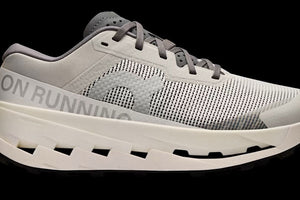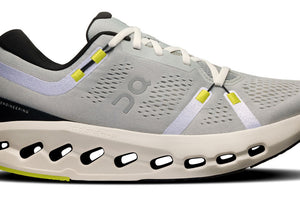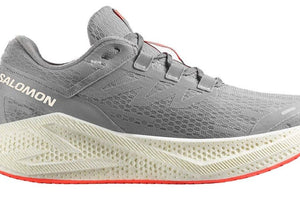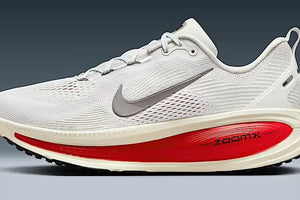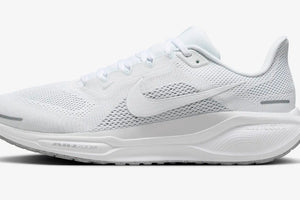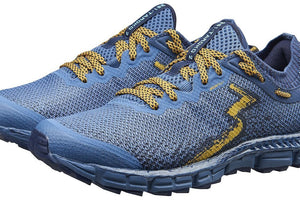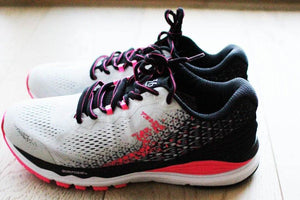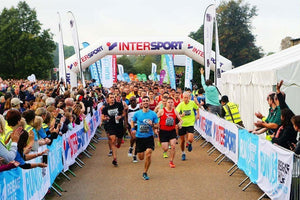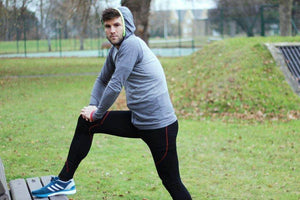Most runners instinctively believe that the best way to get faster is simply to run more. And while building aerobic capacity is undeniably important, it’s only part of the story.
Over the last two decades, a huge body of research has shown that adding targeted strength work into a running program can unlock meaningful improvements in speed, efficiency, and resilience.
Crucially, these gains don’t come from boosting cardiovascular fitness. Instead, they come from upgrading the body’s mechanical and neuromuscular systems so that every stride becomes more efficient. Think of it as getting more speed for the same metabolic “price.”
The Performance Breakthrough: Improving Running Economy (RE)
When implemented well—usually 2–3 times per week for 8–12 weeks—strength training can improve your Running Economy (RE) by an impressive 2–8% in well-trained middle- and long-distance athletes.
What is Running Economy? RE is the fuel cost of holding a steady pace. A better RE means you can run at a given speed while burning less energy.
This improvement alone is enough to:
-
Produce faster time trials from 1.5 \text{ km} up to 10 \text{ km}.
-
Delay fatigue late in races.
-
Increase the pace you can sustain at your lactate threshold.
The strongest gains come from two specific types of training:
-
High-load resistance training: Lifting heavy weights (e.g., 80\% of your 1-Rep Max).
-
Plyometric training: Explosive jumping and bounding drills.
Used together, they produce a “neuromuscular dividend”—a set of changes that make you a more mechanically efficient runner without adding unnecessary bulk.
🔬 The Science: Why Strength is the Missing Link
While VO_2\text{max} (maximal oxygen uptake) is important for all runners, it tends to be very similar among trained distance athletes. What separates the very best is their Running Economy and the speed they can sustain at their lactate threshold. Strength training is uniquely positioned to improve these exact factors.
1. Neuromuscular Efficiency: Smarter Muscle Use
Heavy strength work trains your nervous system to activate muscles more effectively, using them more intelligently. This improves:
-
Motor Unit Recruitment: Engaging more muscle fibers.
-
Firing Rate: How quickly those fibers contract.
-
Coordination between muscle groups.
The result is that at any given submaximal pace, you use less neural effort. Your body doesn’t have to work as hard to produce the required force. This reduction in neural “cost” is one of the main reasons RE improves.
2. Stiffer, More Responsive Tendons
Plyometrics and heavy strength work both increase the stiffness of the muscle-tendon unit, particularly around the ankle. This is highly beneficial because a stiffer spring stores and releases more elastic energy with every footstrike.
During running, this elastic recoil is essentially “free energy.” Improved stiffness means:
-
Better utilization of the Stretch-Shortening Cycle (SSC).
-
Quicker transition from landing to toe-off.
-
Less unnecessary muscle shortening (which is metabolically expensive).
3. Delayed Neuromuscular Fatigue
While endurance training improves metabolic fatigue resistance, strength training improves neuromuscular fatigue resistance. Together, they allow you to hold your form better late in races, delay the breakdown in stride mechanics, and maintain pace deeper into exhaustion.
🛠️ Building the Optimal Strength Program
The evidence-based performance gains are consistent: RE improves by 2–8\%, and time trial performance improves across distances. However, training specificity matters.
Choose the Right Modalities
| Training Type | Focus | Key Characteristics | Best For |
| High-Load Resistance (HL) | Maximum Force | 80\% or more of 1\text{RM}, 3–8 reps, 3–5 sets. | High-speed runners and those with strong aerobic engines. |
| Plyometrics (PL) | Explosive Power | Bounding, hopping, box jumps, skipping. Builds Rate of Force Development (RFD). | Moderate-speed runners, especially at sub-threshold paces. |
Best Practice: Research repeatedly shows that pairing HL and PL often delivers the greatest overall improvements in running economy.
Training Frequency: The Minimal Effective Dose
Runners can achieve excellent results with a minimal effective dose of 2–3 high-quality strength sessions per week, using moderate total volume. For busy runners, lower-frequency programs (when weekly volume is constant) are just as effective as daily ones.
Train the Muscles That Truly Matter
Running is powered by the posterior chain—the glutes, hamstrings, and calves—and stabilized by the core and hips. Approximately 80\% of all strength work for runners should target these muscles.
Key exercises include:
-
Glute bridges and hip thrust variations
-
Single-leg RDLs and Deadlifts
-
Nordic hamstring curls
-
Calf raises
-
Side planks, front planks, and hip abductor/external rotator work (bands/cables)
📆 Periodising Strength Into Your Running Plan
Strength training must complement your running, not compete with it. The activity you do first receives the highest performance outcome.
| Running Phase | Strength Frequency | Emphasis | Session Order |
| Base Phase | 3–4 sessions/week | Building maximal strength with heavy lifting. | Lift before running on combined days to prioritize strength gains. |
| Build/Specific Phase | Reduce to 2 sessions/week | Shifting focus to explosive power and strength maintenance. | Run before lifting to prioritize quality running workouts. |
| Peak/Taper | 1–2 short sessions | Focus on activation and sharpness. Minimal load; avoid soreness. | Activation work with light loads. |
🩹 Strength for Injury Prevention
Overuse injuries affect a large proportion of runners. Strength training—especially for the hips and core—is one of the most effective prevention tools.
Research shows that strengthening the hip abductors and external rotators significantly improves outcomes for common issues like patellofemoral pain. Runners who consistently complete two strength sessions per week are more likely to stay injury-free and more likely to complete a marathon.
The Takeaway: Strength training is highly beneficial, but only when integrated intelligently into the overall training load—and supported by adequate recovery, including proper sleep. Poorly managed strength work can contribute to cumulative fatigue and increase injury risk.
✅ Final Thoughts
The evidence is clear: targeted strength training is one of the most powerful tools a runner can use to improve performance. By enhancing neuromuscular efficiency, tendon stiffness, and fatigue resistance, you can expect meaningful improvements in Running Economy without compromising your aerobic capacity.
To make strength work for you:
-
Match your strength training to your pace profile (HL for high-speed, PL for moderate).
-
Periodise your training across the year.
-
Focus on the key running muscles: glutes, hamstrings, calves, and core.
-
Prioritize 2–3 high-quality sessions per week.
-
Ensure recovery, especially sleep, is paramount.
When approached with intention and structure, strength training doesn’t just make you stronger—it makes you a faster, more efficient, and more durable runner.





















































